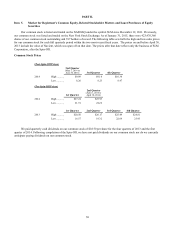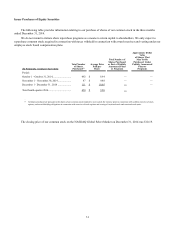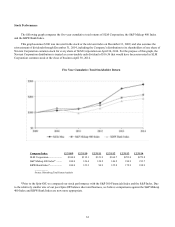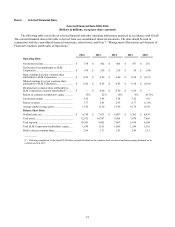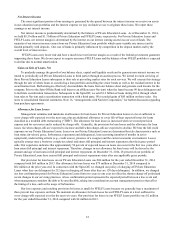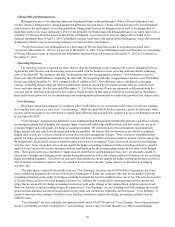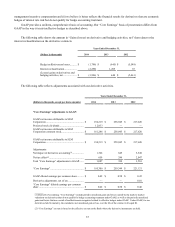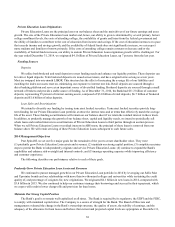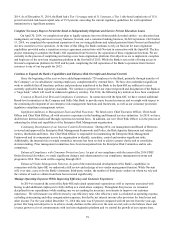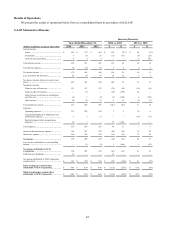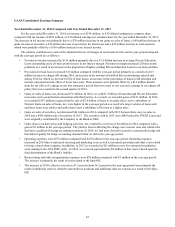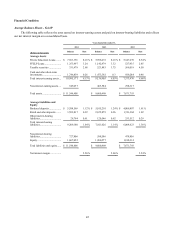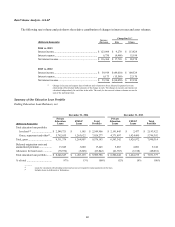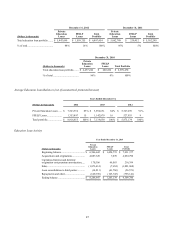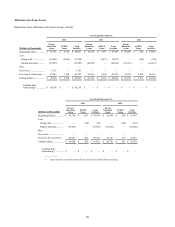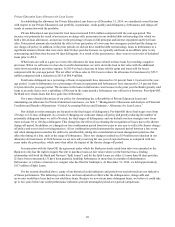Sallie Mae 2014 Annual Report Download - page 42
Download and view the complete annual report
Please find page 42 of the 2014 Sallie Mae annual report below. You can navigate through the pages in the report by either clicking on the pages listed below, or by using the keyword search tool below to find specific information within the annual report.2015 Outlook
Having now completed the majority of post-Spin-Off separation activities from Navient, in 2015 we intend to complete
the remainder of these activities and be able to invest significantly more time and resources into growing our business and
improving the experience of our customers. Slow but steady economic improvement, low interest rates and relatively stable,
liquid capital markets are increasing secondary demand from purchasers and investors interested in acquiring or financing our
Private Education Loans. While overall rates of college enrollment may be moderating somewhat, growth at four-year public
and private institutions that represent the core of our business is likely to remain strong.
Congressional efforts to achieve reauthorization of The Higher Education Act ( the “HEA”) in 2015, as well as the run up
to the 2016 Presidential election, will continue to keep the debate over the funding of the costs of higher education, and the role
of Private Education Loans in that regard, in the public eye. While most of the HEA’ s provisions relate to the levels and types of
Federal funding of education loans, various aspects of the disclosures, servicing, and rehabilitation of Private Education Loans
could directly affect our business and decisions regarding the form, loan limits and budget scoring of federal education loan
programs could indirectly affect our business. As of January 1, 2015, the CFPB became the primary consumer protection
regulator for Sallie Mae Bank; however, the FDIC will also continue its oversight of these important matters. We believe our
significant and ongoing efforts to improve our consumer protection compliance infrastructure are equally suited to support our
efforts to work cooperatively with both the CFPB and FDIC.
2015 Management Objectives
For 2015 we have again set out five major goals to create shareholder value. They are: (1) prudently grow our Private
Education Loan assets and revenues; (2) maintain our strong capital position; (3) complete the necessary steps to permit the
Bank to independently originate Private Education Loans; (4) continue to expand the Bank's capabilities and enhance risk
oversight and internal controls; and (5) manage operating expenses while improving efficiency and customer experience. Here
is how we plan to achieve these objectives:
Prudently Grow Private Education Loan Assets and Revenues
We will continue to pursue managed growth in our Private Education Loan portfolio in 2015 by leveraging our Sallie Mae
and Upromise brands and our relationship with more than two thousand colleges and universities. We recently expanded our
campus-focused sales force to provide deeper support for universities in all regions of the United States and, as a result, we
expect to be able to demonstrate increased 2015 originations through this effort. We are determined to maintain the average
FICO scores and cosigner rates on our originations at levels similar to those at which we ended 2014. We will also increase our
efforts to help our customers manage their borrowings and succeed in making their payments, which we expect will result in
lower charge-offs and provision for loan losses.
Maintain Our Strong Capital Position
The Bank is required by its regulators, the UDFI and the FDIC, to comply with mandated capital ratios. We intend to
maintain levels of capital at the Bank that significantly exceed those necessary to be considered “well capitalized” by the FDIC.
The Company is a source of strength for the Bank and will provide additional capital as, and if, necessary to the Bank. Our
Board of Directors and management evaluate the anticipated change in the Bank’s ownership structure, the quality of assets,
stability of earnings, adequacy of our Allowance for Loan Losses and we continue to believe our existing capital levels are
sufficient to support the Bank’s plan for significant growth over the next several years and remain “well capitalized”. As our
balance sheet grows in 2015, these ratios will decline but will remain significantly in excess of the capital levels required to be
considered “well capitalized” by our regulators. We do not plan to pay a common stock dividend or repurchase shares in 2015.
We expect to be active in the capital markets in 2015. We plan to sell Private Education Loans in whole or through
securitization transactions, as well as partially finance the cash needed for the funding of new originations through ABS
transactions. We expect the market for loan sales and financing sources to continue to be strong in 2015. We will be
opportunistic and sell additional loans if the market is significantly stronger than our expectations. It is likely, regardless of the
structures utilized, we will realize gains on sales of whole Private Education Loans.
We also expect to use the ABS market to complement our deposit funding to raise term funding for our loan portfolio.
Private Education Loans financed through these transactions will remain on our balance sheet as we will retain the residual
interest in these trusts.
40


